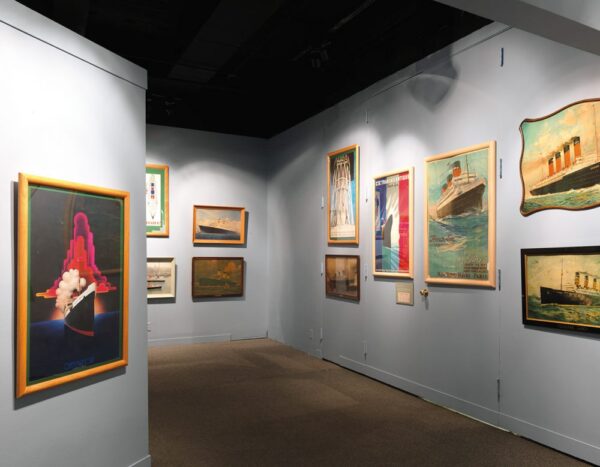It is 1931. A six-year-old boy peers up at a poster of a steamship hanging in his father’s tailor shop in Victoria, B.C. In it, the Empress of Asia is steaming at sunset toward Canada, leaving Hong Kong, a land his parents once called home, and its junks behind. He is enraptured; the ship is a romantic icon for travel to faraway places. Forevermore fascinated by maritime things, the young Wallace Chung begins to collect clippings, often cutting up the newspaper before his father has a chance to read it. Eighty years later, his collection would comprise some 40,000 items including liners’ publicity materials, books and periodicals, maps, posters, photographs and other artifacts dating between 1741 and 2000. When Dr. Chung and his wife, Madeline, decided to downsize their home in 2005, three archivists were invited to help him catalogue his collection. It took six months to document it all.
Dr. Chung’s collection, like many others, began slowly but gathered momentum with each decade. News travelled, mainly by word of mouth, and people with rare or valuable items began to seek him out. In 1990, a woman saw an exhibit at the Vancouver Maritime Museum displaying posters from his collection. She later called the museum to inform Dr. Chung about a builder’s model of the Empress of Asia in a condominium basement in Toronto—the very ship that not only inspired him to collect as a boy, but that also brought his mother safe passage to Canada in 1919.
“When I first saw it, my heart just broke, as it was in such poor shape,” Dr. Chung recalls. Upon learning that it would take $105,000 to have the model restored, he decided to take on the project himself. It took 4,000 hours over a six-year period to complete. Dr. Chung beams as he explains how everything had to be handmade. “You learn on the way. And when you get midway through, the earlier things are not done right, so you do them again. Fortunately, with my profession, I’ve been using my fingers.” Before retiring, Dr. Chung had been at the helm of the department of surgery at the University of British Columbia Hospital.

Posters from the Chung Collection at the Vancouver Maritime Museum.
For Dr. Chung, the rebuilding of a damaged model ship is a metaphor for the act and purpose of collecting—as parts are restored and pieced back together, the original image emerges, and with it, history is revealed. “When you start off, it’s like a big jigsaw puzzle. You see holes in it and you start filling it in,” he explains. Dr. Chung’s interest in Canadian Pacific steamships also led him to begin collecting artifacts related to the railway. A picture started to come into focus that told a story relevant not just to Chinese-Canadians, but to Canadian history at large. In the 1880s, thousands of Chinese labourers risked their lives to help build the railway—something which was integral in uniting Canada, facilitating settlement, trade and industry. Relics from the Chung Collection tell the story of an evolving Canadian landscape: a part of the last rail laid in 1885 in Craigellachie, B.C.; a gold pan; handsome posters to encourage immigration; a 1782 account of Captain Cooke’s voyage. Other artifacts speak specifically about the Chinese experience in Canada. A bone mahjong set, a man’s head tax certificate and a photo collage of a Chinese businessman’s family are parts of an assortment of tangible history that, when pieced together, tell a story of hope, patience and perseverance.
Having enjoyed his collection for many years, Dr. Chung decided to donate large parts of it to UBC and the Vancouver Maritime Museum, where his artifacts now act as educational and research tools. Despite the energy Dr. Chung invests in his collection to make it a public resource, it is still a labour of love. “Everyone should develop an extra interest outside their profession. This helps not only to reduce stress but [there is also] the joy of finding something that you’ve been looking for, for years.” Collecting is often deeply personal; it’s about paying homage to history and culture, and, of course, finding your place amongst it all.
Photos: Cory Dawson.









